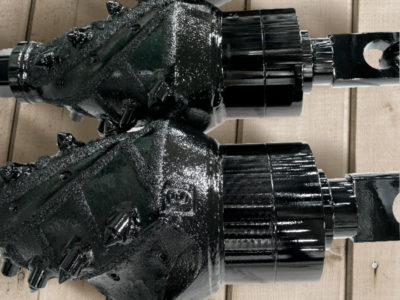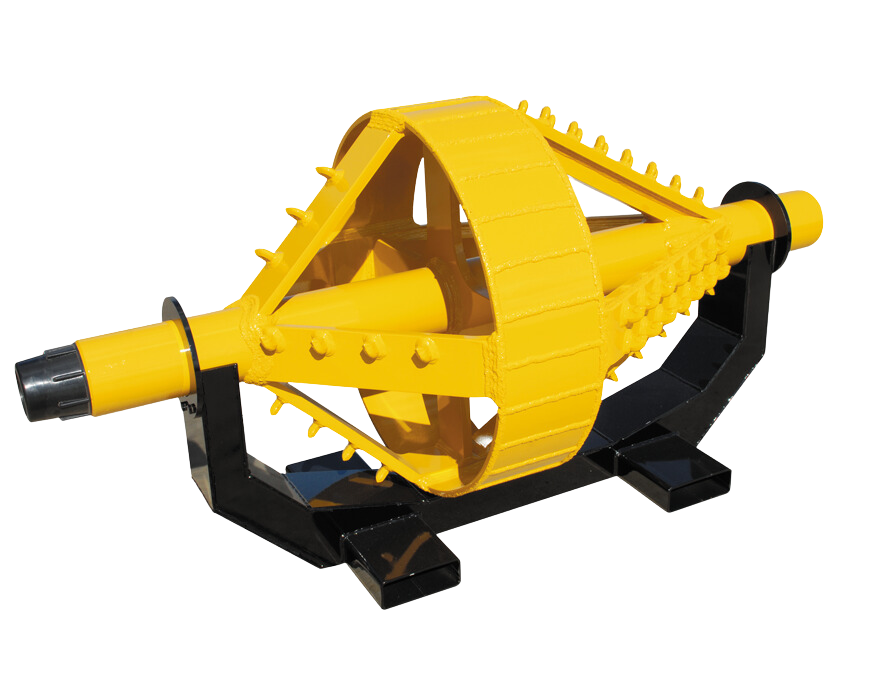Creating the plan for your next project can be complicated. One of the many decisions you have to make is what kind of reamer you’ll use when you’re opening the borehole and installing the product. There are a lot of reamer options to choose from, and if you aren’t asking the right questions, you might arrive at a wrong answer. To help you select the right reamer for your next project, ask and answer these five questions.
What’s the soil condition you’ll be working in?
The first thing you have to consider is the soil that you’ll be working with. Is it sand or clay or rock?
“Mixer-style reamers are designed to maintain flow in high-moisture clay and sandy conditions,” said Chris Fontana, a lifecycle sales manager at Vermeer. “Packer-style reamers are preferred in dryer, compacted soil or loose rock. When harder, consolidated rock is encountered, a range of tools with specialty cutters are available depending on the hardness and consistency of the rock.”
For each different soil condition, there is an ideal reamer. For a complete guide to which Vermeer reamer is ideal in each kind of soil, check out our applications guide.
What’s the size and material of the product you’ll be putting in?
Next, you should be thinking about how big and what kind of product you’re installing. After you know the answer to that, you can select your reamer based on the size of the pipe and the material. This is important because reamers can come in a variety of different sizes.
“We recommend that your reamer size is at least 1.5 times the widest product pipe pack that you’re pulling through,” explained Fontana. “So, if you’re pulling a 4-inch (10.16-cm) product through the hole, you need at least a 6-inch (15.24-cm) reamer.”
The length of the project, the type of ground conditions and the allowable bend of the product pipe being installed may require the bore to be opened up beyond the 1.5 times rule. But it’s important to note that no matter the size or material you’re putting in, reamers can be built to the diameter that you need.
Do you need to do any pre-reaming?
You should also ask yourself if you need to pre-ream. For larger diameter installations, a series of pre-ream stages are likely required to upsize the bore prior to final pullback of the product pipe. It’s not possible to go from an 8-inch (20.32-cm) hole to a 30-inch (76.2-cm) hole. Instead, you’ll have to do it in segments, which is called pre-reaming.
“To do this, you’ll want to use a reamer that can smoothly be pushed back out of the hole, with an aggressive taper on the backside,” explained Fontana. “That way, it doesn’t meet resistance when it comes out of the hole.”
Vermeer offers two reamers that are tapered for pullback ease: the supreamer reamer and the fluted reamer. While it may be less expensive to have a reamer with a flat back, they may not be able to handle pre-reaming.
How do I incorporate a swivel?
A swivel is used to isolate the product pipe from the rotation of the drill stem and is sized based on the pull force estimated to complete the project. Sometimes they are separate components connected by a clevis, while others are integrated into the reamer.
For certain conditions, Fontana suggested an integrated reamer/swivel. “Usually, the more space in between your product and your reamer, the greater the inefficiency,” said Fontana. “For example, say that you’re opening a borehole in cobble. After you open the hole, the disrupted soil falls right back in between the reamer and the product. If that happens, it can be tough on the product and potentially split it.”
Putting a swivel on your reamer may be a good option to help protect the product being installed.
What is your connection size?
Lastly, consider your connection size. Reamers are built on a connection platform that’s based on the maximum pullback force and rotational torque of the HDD being used.
For example, if you have a Vermeer D24x40 S3 horizontal directional drill, you’ll need a minimum of 2-3/8-inch API on your reamer to withstand the torque and pulling forces from the drill. The thrust/pullback force on a D24x40 is 24,000 pounds (10,900 kg) and the rotational torque is 4,200 ft-lb (5,690 Nm).
For operations that have multiple machines, there’s an additional consideration here. “If you have a multi-machine fleet, you may want to buy one tool that is compatible between all of your machines,” said Fontana. “That way, you can use the same reamer or connection on a variety of drills.”
Overall, the main thing to remember is to match the connection to the machine.
After you’ve asked and answered these five questions, it’s time to select the right reamer for your operation. If you have any additional questions, reach out to your local Vermeer dealer today.
Vermeer Corporation reserves the right to make changes in engineering, design and specifications; add improvements; or discontinue manufacturing at any time without notice or obligation. Equipment shown is for illustrative purposes only and may display optional accessories or components specific to their global region. Please contact your local Vermeer dealer for more information on machine specifications.
Vermeer and the Vermeer logo are trademarks of Vermeer Manufacturing Company in the U.S. and/or other countries. © 2021 Vermeer Corporation. All Rights Reserved.

